This week, Dan Martell, founder and author of Buy Back Your Time joins Marcel to discuss something all agency owners should be focussed on – how to buy back your time.
About Dan Martell
Dan Martell is a serial entrepreneur, with five startups, three exits, an investor in some of the biggest, fastest growing companies in the world like Intercom, Udemy, AND an award-winning angel investor.
He became a highly sought-after coach in the SaaS industry (he just so happens to be behind SaaS Academy; the world’s largest and number one coaching program in the world for B2B software CEOs) after exiting his three tech companies within a ten-year period. Dan’s business focus tends to lean towards software. That said, he’s been involved in very successful consulting and services businesses, including consulting and enterprise Fortune 500 companies.
An Ironman athlete, philanthropist, husband, and father of two incredible boys – when he’s not bossing all things SaaS, he’s hanging with friends, enjoying wake surfing, mountain biking, and snowboarding.
Points of Interest…
- Dan’s Ethos on Buying Back Time 4:01
- Moving Past the Entrepreneurial Pain Line 5:59
- When Best to Apply the Buyback Principle 9:10
- Calculating your Buyback Rate 11:51
- The Buyback Loop Framework 13:24
- Follow-Up & Ongoing Management 16:53
Dan’s Ethos on Buying Back Time
Our guest is a longtime mentor, coach, and friend to me. He’s also an investor and board member at Parakeeto, and one of the main reasons that we even started this show! When we started this podcast, I asked Dan to be a guest and he said – and I quote – “do a hundred episodes and then come back and see me.”
Welp, now that we’re around the 105 mark, it seems a fitting juncture to request his presence. This show wouldn’t have reached a hundred episodes if it weren’t for the very thing we’re gonna talk about today – that being the buyback principle, and Dan’s thesis around time.
Let’s face it, he’s a VERY busy being. And yet, he’s so good at time management that he managed to write a book about it, thus sharing his transformational ethos with fellow founders. But what drove him to write it in the first place?
“When I started coaching and requiring clients to free up their time to be able to execute the strategies, the growth playbooks. So the Buyback Principle became the core framework that we taught everybody so they could free up their time! I always assumed it was a pretty basic thing – but when I started sharing it with coaching clients people were like, ‘Woah… that’s a novel approach to hiring and deploying capital.”
So, what is the core thesis of the Buyback Principle? Don’t hire people to grow your business; hire people to buy back your time. Dan has always referred to it as Calendar Over Capacity. Why? Because Dan wants to teach entrepreneurs how to build a business they don’t grow to hate…
Moving Past the Entrepreneurial Pain Line
Agency owners all too often wake up one day with a dozen employees and just absolutely hating their day, feeling like they don’t have time for anything and they’re spending more time-solving problems and putting out fires than actually doing the work they used to love.
Dan refers to this as The Pain Line, and it’s the point at which most entrepreneurs will either decide to sell, sabotage, or stall.
“I don’t want that pain line to be the thing that stops them from creating more in the world. Like I think entrepreneurs, if they’re great at their craft, in their art, I want them to do more art. And that’s why the subtitle of my book is, ‘And Build Your Empire’ because I want you to buy back your time for that – not go hang out on a beach or watch Netflix.”
As for what differentiates the Buyback Principle from how we would traditionally think about hiring and outsourcing the more standard assumptions that people have around this concept?
“Yeah, most people hire or outsource contract work – for example, ‘I have an agency and I do design, ergo I must hire another designer.’ My philosophy is ‘No, let’s maximize your time to do that craft the most – because that’s what you’re monetizing at the highest level’.”
This is where the magic happens… Dan then audits his clients’ time from a time, energy, monetization, and energy level. Get all the stuff that sucks your energy, that’s a low-value task, and get somebody else to support you there. Why? So you can do more of your craft because it’s actually a mathematical principle you can’t argue with.
“Spend dollars to buy back time, hire someone to do the low value tasks, to free up your calendar, so you to go do higher value tasks that make you more money! This is the best time trade, and most people do it backwards.”
***I discuss how transformational Dan’s Buyback Principle was for me, personally, from 8:06***
When Best to Apply the Buyback Principle…
Eh, as soon as possible, obviously! I know what you’re thinking though; “I don’t have the time or money to hire anyone and it’s WAY too premature to be hiring myself an assistant.” The answer to that is a hard “No; you can’t afford NOT to hire an assistant at the earliest juncture.” Here’s why…
“Let’s say I lose all of my resources, my net worth, all of it, and I’m starting a business tomorrow? I would absolutely convince somebody to be my executive assistant, even if I couldn’t afford to pay them. And the reason why is that any minute I’m not focused on talking to the market, or doing a sales call, or delivering the thing I sold, is all just time I should be doing that.”
In other words; in order for you to get the necessary speed to achieve that growth in your business, then you HAVE to buy back that time. It’s just a correlated thing. To contextualize this further, Dan offers this revealing example of just how important assistants are for not just the growth of your business, but for your quality of life…
“I’ve shared this with my wife; I’d sell everything I own before I get rid of two people – my executive assistant and my house manager, Betty. Those two people in my life buy back the most amount of time. It’s about being able to recharge; because I have those people supporting my life and a ton of other people, I can be more present with my kids.”
Every time you say “yes” to one thing, you’re saying “no” to a load of other things – be it a date night, going to the gym, or reading to feed your mind. So, get yourself an assistant. Start out part-time, task-style, perhaps 20 hours a week, or whatever you can afford. If you’re starting out and charging $50 bucks an hour for your time, you can afford it.
Side note: our Agency Profit Toolkit is a one stop shop for you to be able to outline some of these crucial profitability numbers to a potential buyer. Spreadsheets, templates and training videos, you name it, it’s all in the toolkit. Grab yours free at the link below:
Calculating Your Buyback Rate
I’ve a sister who’s embarking on her own entrepreneurial journey, and once I pointed out to her that she could work just one hour while paying her assistant for 10 hours – and not do ANY of the stuff she didn’t like doing, a lightbulb immediately went off for her.
Whatever your hourly monetization is, whatever you earn an hour if you divide that by four – that is your Buyback Rate right there. According to Dan, it’s optimum to get four times the ROI. So, let’s say someone is earning $40 an hour, they can pay their assistant $10, and buy back ALL this time. If you can pay someone else to do a certain facet of your life, then it just makes zero financial sense to NOT do that!
Go buy back that hour. Then, you can go do something only you can do that can support your future and your growth. Now that you’re sold, let’s delve into the nuts and bolts of it…
The Buyback Loop Framework
When somebody starts thinking through this framework, where does one start? Well, step one is…
- The Time & Energy Audit
What do people need to get right in order for that audit to return the insight it’s meant to, to return? Dan recommends 14 days…
“So that you have enough, um, elapsed time to see different variations of your life. One week may not show the different distortion in your life, but if you do a two week audit it should. Simply set off a timer every 15 minutes and just write down what you did for the last 15 minutes.”
Yep, everything. Even if it’s watching TikTok on a loop. Once you do that, then you can definitively log your time via your calendar. Then, grab yourself a highlighter, and mark in red ALL the things that suck the living daylights out of you energy-wise – be it sending out invoices or proposals.
Conversely, highlight everything you enjoy/energize you in green. Subsequently, you should start assigning monetary value to showcase what should be inexpensive to very expensive work. If you deem it inexpensive work, then that’s the task you should pay someone else to do.
“Just keep working yourself way up. And once you do the Time & Energy Audit, take all the red tasks that you’ve highlighted at the lowest dollar sign, and that’s your hit list to give typically to an executive assistant, or a personal assistant.”
2. Camcorder Method
Hitlist in hand, you now have to transfer how to do these tasks to your assistant. Dan talks about his Camcorder Method in the book, whereby you literally record yourself (either old school or via Loom, whichever suits the work best) doing the work and talking out loud. Do that three to five times and send it to your assistant.
Don’t get bogged down in editing it or making it a Hollywood production; the whole point here is to buyback your time, which would be sucked up by sitting down to train someone.
“I’ve done this in every aspect of all my businesses. Even strategic planning to creating content, to coaching, to sales and marketing. That way, when somebody joins your team, you can just have them watch the trading videos. I actually have the person I hire to. buy back my time, create the SOPs – so I don’t even create the standard operating procedures, or what I call playbooks.”
3. Fill your new time
Once you start trading your time, what do you fill it with? Skills, mindset, belief seminars, strategies, and then relationships.
***More how I applied this ethos to Parakeeto from 16:37 minutes***
Follow Up & Ongoing Management
Of course, there is a learning curve to everything. Your new hire isn’t going to immediately take up the reigns and you need to expect mistakes. What does that level of support look like from Dan’s experience to ensure your assistant has the clarity required to meet long-term expectations?
“In the book, I teach this Coaching Framework because, I think, business owners are really bad at leading people. They can be harsh, and overly candid. They don’t realize that this person did the best they could with what they had.”
Naturally, Dan has a three-step Coaching Framework to aid in this regard…
- Don’t interrupt. For example, Dan uses a Google Doc called Ad Agenda and it includes all the people that report to him. Anytime there’s something you need to discuss with them, just write it in there and save it for your one-on-one chats. This is key as it removes any emotional attachment to the thing until you have the space to sit down and talk to them. . ***more on this from 17:56***
- Discuss the principle. When you’re discussing what went awry during the process, don’t attack the task undertaken, rather focus on the principle behind it. For example, if it’s a communication issue; you responded to something but you weren’t clear, well then the principle of clear communication was violated, so let’s talk about clear communication. Use a story to highlight the principle, be it from your own life, an article you read, etc.
- Ask what they took away from the story. Your humanizing story usually acts as the glue for the person to actually understand the principle behind it. To ensure they comprehend what’s required, ask them for one change they are going to commit to going forward based on now knowing what’s required.
***We dive into coaching more from 19:10***
Key Takeaway…
To buyback your time, follow this three-step framework…
- Undertake a Time & Energy Audit over the course of two weeks
- Record yourself doing the tasks you want to hand over to an assistant, for ease of transfer
- Fill your newly acquired time with all the productive stuff you never had time for before!
These are the three most powerful things you can do to really level up your life and your business.
See more from Dan…
- Dan’s website danmartell.com
- Buy Back Your Time via Amazon
- Dan’s Twitter @danmartell
- Dan’s LinkedIn @danmartell
Did you learn anything new from this episode? Let us know in the comments below! We have helpful blogs designed to bolster your agency profitability, such as How To Calculate Your Billable Employee Cost-Per-Hour.
Our next installment of #APP, on February 8th, will see Marcel chat with Ryan Thrash for our 106th edition. Our previous blog – Episode 103 with Paul Higgins – can be viewed here…
Avid #APP Listener?!
We would be eternally grateful if you could leave us a review…
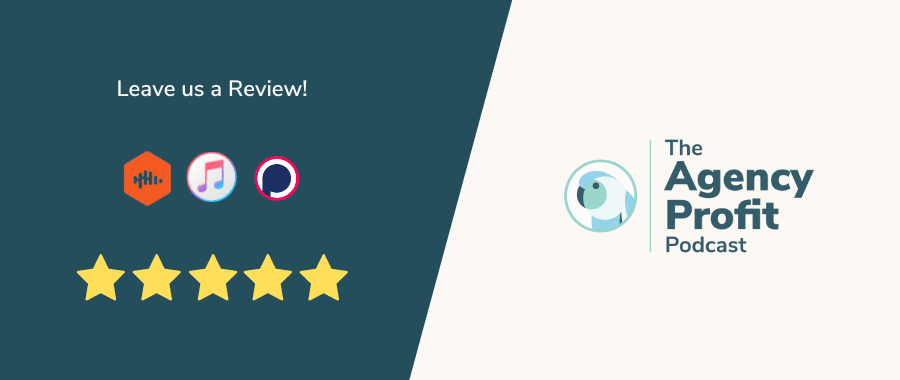
Agency Profitability Tool Kit
If you’re looking for more resources to help you improve your agency’s profitability, check out the Agency Profitability Tool Kit. It’s full of templates and checklists used when consulting clients. This helps them improve profitability by over 100% in under 60 days.
Fill out the form below for your copy!

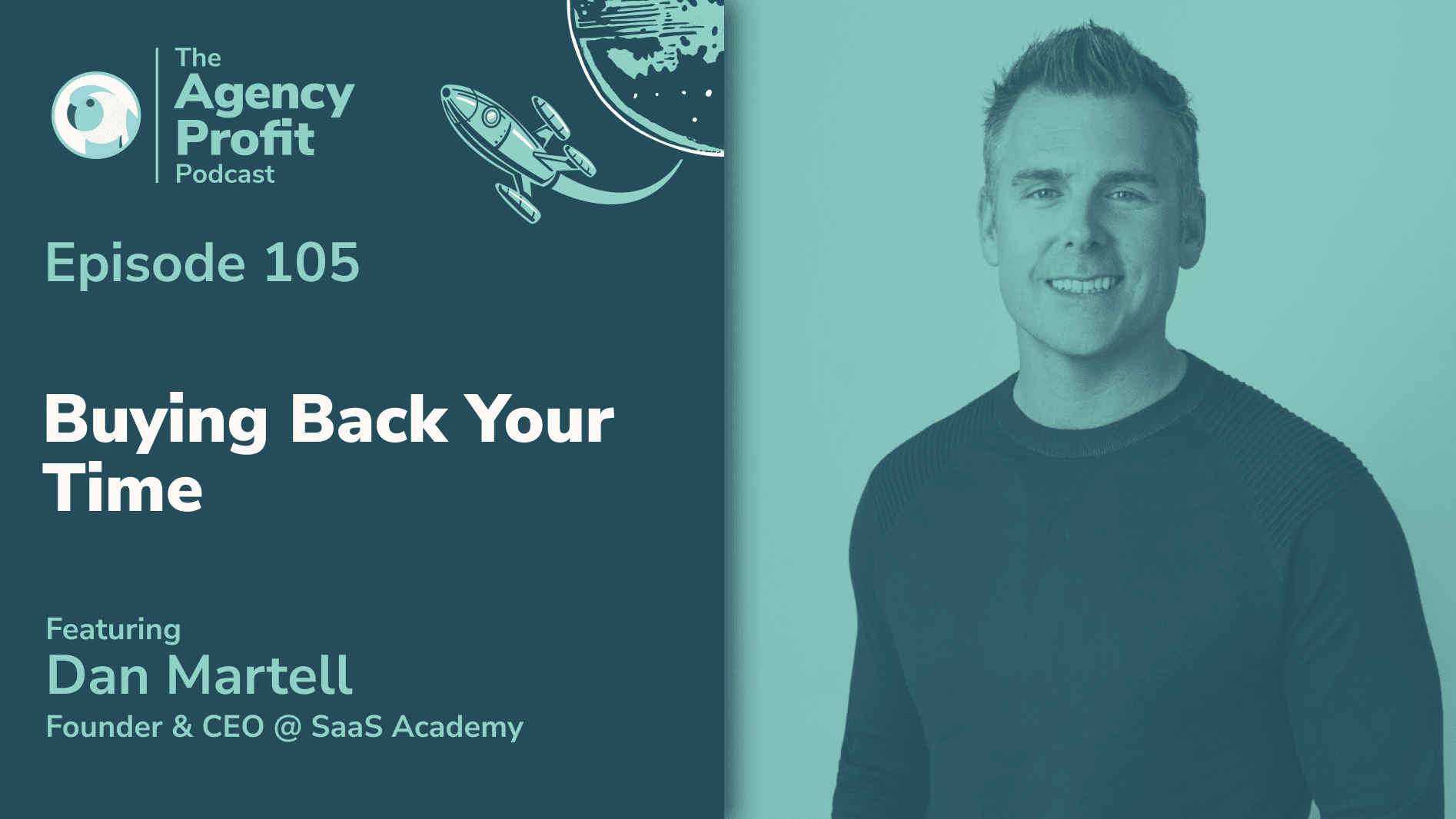


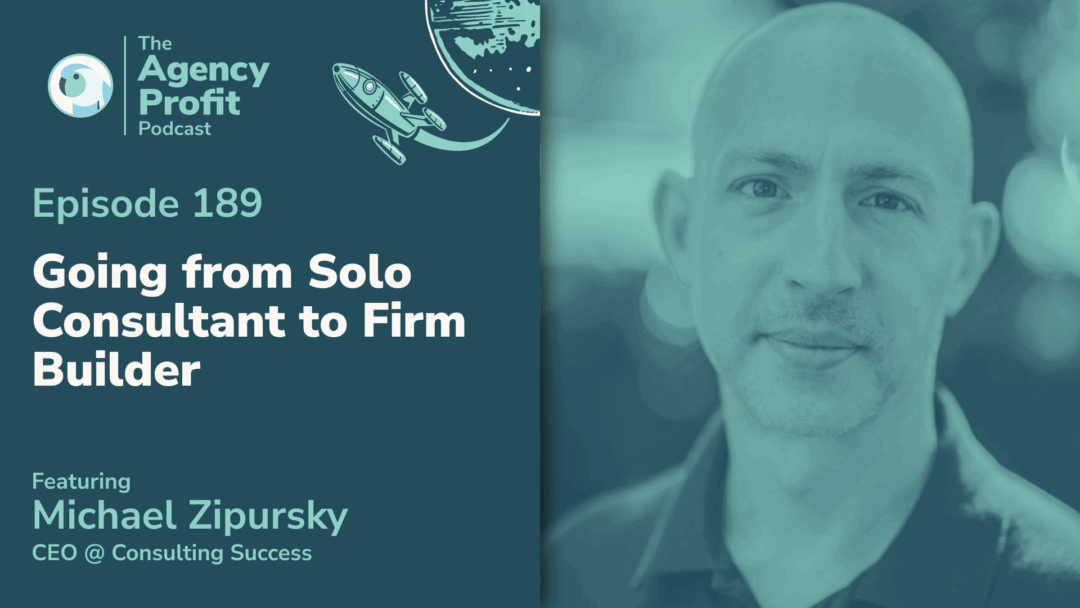
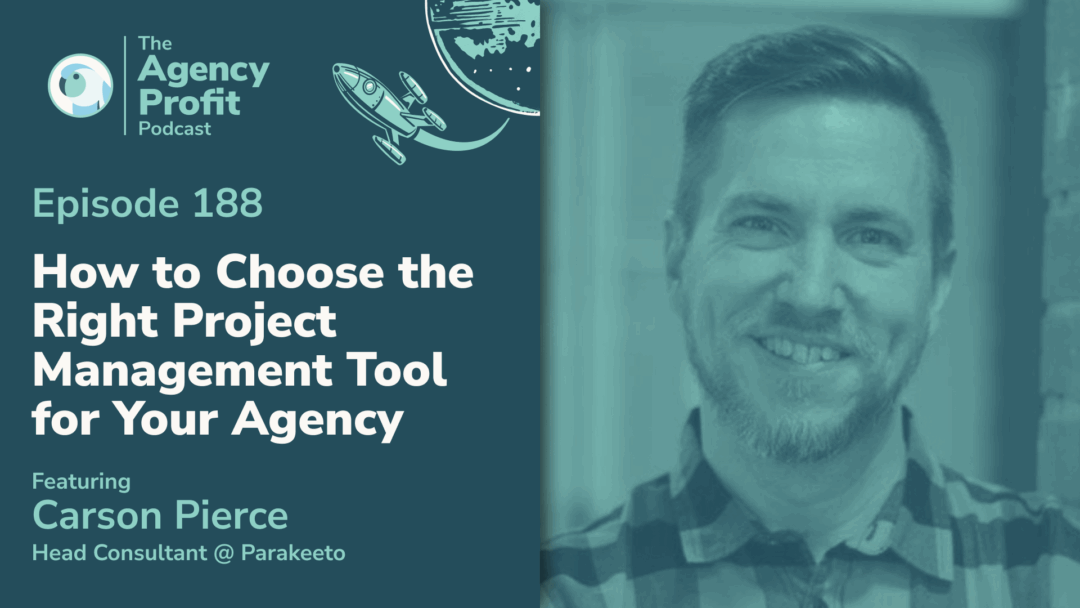
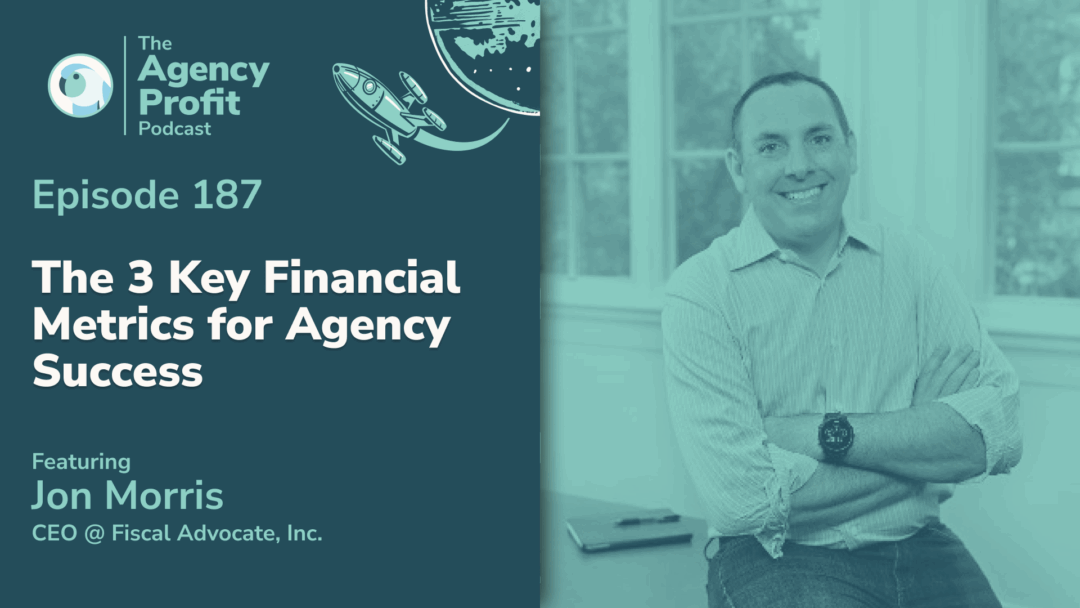

0 Comments